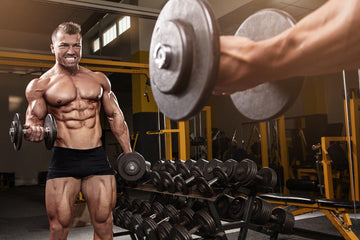Shock the Muscles with These 4 New Training Methods
Table of Contents
Training can be simple and effective. Sometimes it can be as simple as picking something up, putting it down, and repeating. But there are benefits to trying different techniques and methods with the intent of creating new muscle growth.
By Roger Lockridge
Aside from making the workouts more interesting, it can help you break plateaus and improve strength with the muscles you’re focusing on as well as overall. Experiment with these four tips and tricks and you can see all those benefits for yourself but be prepared for the challenges that come with them.
Pre-Exhaust Training
For so long we were told and taught to start training with a compound exercise because you will have the most energy, can handle the most weight, and can improve your strength the most. Pre-exhaust training appears counterproductive to all of that. Focusing on pre-exhaust training means you would start with an isolation exercise before hitting that compound movement. Using legs as an example, instead of starting with squats you would start with single leg extension. The benefits of this are that you would be able to focus on imbalances with strength or symmetry and you can use this exercise as a warmup before starting that big compound lift.
21’s
These are most popular with the classic barbell curl for biceps but truth be told, you can do these with many different movements for any muscle group. For those of you that aren’t familiar with these, 21’s are when you perform the bottom half of an exercise (start to midpoint) for 7 reps, the top half of the exercise (midpoint to finish) for 7 more reps, and finally 7 complete reps. 7 x 3 = 21, thus, 21’s. You can do these with flyes for chest, lateral raises for shoulders, or pullovers for the back. And yes, you can use them for any curl for the biceps.
Use Different Equipment
The most popular free weight exercises are performed with barbells and dumbbells which I have no issue with at all but have you considered any other alternatives? One would be the triceps bar. This is the bar that has the vertical handles in the middle. Outside of the triceps exercises you would obviously use this for, you can also do bent over rows for back, barbell curls to target the forearms, or even superset front squats with stiff-legged deadlifts.
When it comes to dumbbells, try switching it up and using kettlebells instead. Since you would hold the weight by the handle or sides of the handle (aka horns) and the weight is below your hands, you will train the muscles in a different way. Use heavy kettlebells for one arm rows or incline curls. You can also do shoulder presses or pullovers.
Cheat Reps and Negatives
Just because you can’t perform the lifting (concentric) portion of the rep doesn’t mean you’ve reached complete failure. You still have a little left in the tank and this is where negatives come into play. The negative (eccentric) portion of the rep is where your muscles are challenged the most. Let’s use the rope pressdown as an example. You’ve reached the point that you can’t complete a rep with proper form. Use a little emphasis and body momentum to push the rope back down. Once you do, make it a goal to slowly lower the weight back to your starting position. If you’re able to perform another rep, do so. Keep going until you can no longer control the weight on the way back down. This is failure.
One disclaimer. Don’t use this as an excuse to use more weight and cheat every rep. That’s not the point and you could get injured. Using negatives as an intensity booster at the end of the workout can be effective for you in the short term and long term.
















